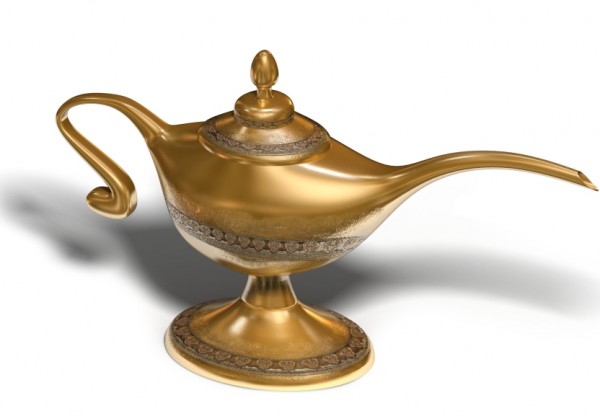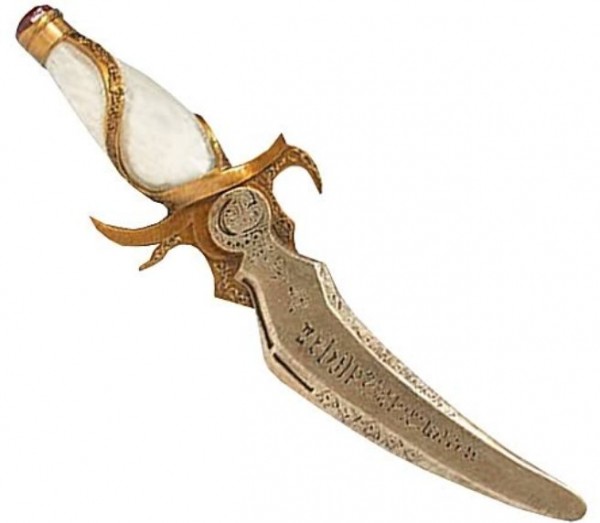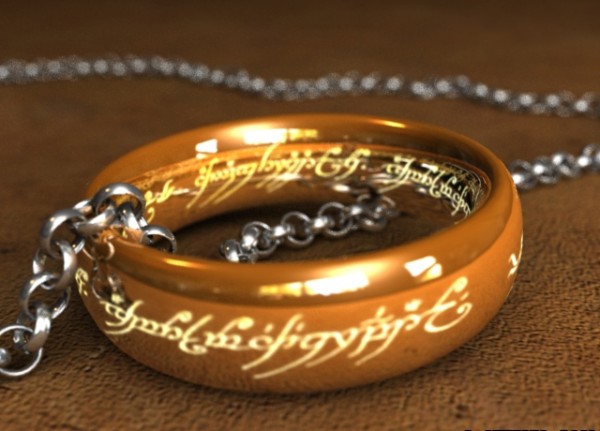5. Elder Wand
Harry Potter Series

Type of Plot Element: Wand
Function: Protects the Host from Damage
Specific Traits and Abilities: Invincibility to Wielder
The Elder Wand , known throughout history as the Death Stick or the Wand of Destiny appearing in the Harry Potter series, is an extremely powerful wand made of elder wood with a core of Thestral tail hair.It is supposedly the most powerful wand in existence, and when used by its true master, he or she cannot be defeated in a duel.
It also appears, as the wand is somewhat sentient (as are all wands), that it will not allow itself to cause real harm to its true master. As stated by Mr. Ollivander the wandmaker, the wand will never fully work for the new user unless he or she directly disarms, stuns or kills (even in Muggle fashion) the previous master. Rowling has stated that the wand is brutal in its choice of master, and that, whilst most wands have some allegiance to their own masters, the Elder Wand only responds to power. If a master dies naturally without ever being defeated, the wand’s power will die for any following owner, since it was never won from the former.
4. Summoning Horn
Bartimaeus Trilogy

Type of Plot Element: Horn
Function: Summons anyone in its range
Specific Traits and Abilities: Can Summon Spirits and Dead
Bartimaeus Trilogy is a favourite fantasy series by Jonathan Stroud in 2003 – 2006. Magic in the trio can be created by two entities, the magician or the magical entity summoned from the Other Place.
A large ivory horn was used in the trio called the “Summoning Horn” that can be used to summon any entity within the users command at a moments notice regardless of how powerful it is, breaking the horn while reciting the correct incantations will automatically dismiss the summoned Spirit. According to Bartimaeus, any spirit that is within range of the horn when blown will be “begging for mercy”, likewise a spirit can tell a genuine Summoning Horn from a fake as it makes them ill to be in the presence of one. Summoning Horns are quite rare given the prerequisite needed to make them work; the first user must surrender himself to the mercy of whatever Djinn he is summoning, because most Djinn are malignant towards Magicians, this generally results in the death of the first user. Simon Lovelace had one in his collection and used it to summon Ramuthra to destroy the government, the horn was broken by Nathaniel near the end of the book and so Ramuthra was automatically dismissed.
3. Magic Lamp
Aladdin

Type of Plot Element: Oil Lamp
Function: Prisons Jinns
Specific Traits and Abilities: Summon Jinni on rub that can grant 3 wishes
The Magic Lamp is an artifact that appears as the pivot component of Middle-Eastern folk tale, Aladdin which is one of the tales in The Book of One Thousand and One Nights (Arabian Nights), and one of the most famous.
Concerning an impoverished young ne’er-do-well named Aladdin, in a Chinese city, who is recruited by a sorcerer from the Maghreb (who passes himself off as the brother of Aladdin’s late father) to retrieve a wonderful oil lamp from a booby-trapped magic cave. Unaware of the powers possessed by this simple vessel, he accidentally rubs it’s gold facade . It is then when the secrets of this oil vessel are revealed. The lamp was forged millions of years ago, almost since forever when a Jinni was forced to live inside it as a prisoner forever for his deeds. He is a powerful prisoner who can do anything except get himself free, and is bound to do the bidding of the person holding the lamp. He can fulfill any 3 wishes of the wielder but can’t be freed unless and only until the wielder would use his one wish to release him. Over years, the lamp had been found and lost time and over again and Jinni had been granting the desires of his masters. While contemplating his wishes, Aladdin asks for Jinni’s opinion. Jinni admits he would wish for freedom, since he is a prisoner to his lamp. Aladdin promises to wish him free for his last wish. And finally after a prison of a million years, for Alladin’s last wish, Aladdin desires for Genie’s freedom, much to Genie’s surprise and happiness.
2. The Dagger of Time
Prince of Persia Franchise

Type of Plot Element: Dagger
Function: As a weapon and controls time
Specific Traits and Abilities: Makes wielder immortal
The Dagger of Time appears in a video game franchise created by Jordan Mechner, the Prince of Persia and it’s inspired movie.
The Dagger of Time is a powerful weapon, capable of allowing its wielder to harness the power of the Sands of Time, and manipulate time itself. If the wielder steps into a large concentration of the Sands of Time, the Dagger of Time will allow them a brief look into the future. The Dagger of Time also is capable of making its wielder immortal. If the wielder uses the weapon to harness the power of the Sands of Time, then impales themselves with the blade, it will embed the Sands of Time into that wielder, making them immortal. The Dagger of Time is also the “key” which opens the lock on the Hourglass of Time.
The Dagger of Time was created on the Island of Time for the ability of controlling the sands, as indicated by the Vizier in Prince of Persia: The Two Thrones, who expressed his feelings over finding it there. It was stolen from the Island of Time before the events of Prince of Persia: The Sands of Time by the Maharajah of India, along with the Hourglass of Time, which contain the Sands of Time. The Prince uses the Dagger of Time to release the Sands of Time during the events of the game. This brings about a plague of sorts; only carriers of the artifacts of time avoid mutation, and the resulting monsters can also only be killed by the artifacts of time.
1. One Ring
The Hobbit and The Lord of the Rings

Type of Plot Element: Ring
Function: Invisibilty
Specific Traits and Abilities: Stops aging, corrupts esp wielder’s minds, omnipotence
The One Ring is an artifact that appears as the central plot element in J. R. R. Tolkien’s Middle-earth fantasy fiction. It is described in an earlier story, The Hobbit (1937), as a magic ring of invisibility. The sequel The Lord of the Rings (1954–55) describes its powers as being more encompassing than invisibility, and states that the Ring is in fact malevolent. The Lord of the Rings concerns the quest to destroy the Ring, which was created by the primary antagonist, Sauron.
The One Ring was created by the Dark Lord Sauron during the Second Age in order to gain dominion over the free peoples of Middle-earth. The Ring seemed simply to be made of gold, but was impervious to damage. It could be destroyed only by throwing it into the pit of the volcanic Mount Doom where it had originally been forged. The lines inscribed on the Ring were written in Black Speech, evidently also part of the spell that imbued the One Ring with power. Normally the One Ring appeared perfectly plain and featureless, but when cast into fire the inscription appeared in fiery letters on the inner and outer surface of the Ring. A person wearing the Ring would enter a shadowy world revealing the physical world from a different aspect, and from which physical objects were harder to see. The wearer was mostly invisible to ordinary beings, like Men, but highly visible to the Nazgûl. The Ring dimmed the wearer’s sight, while at the same time sharpening the other senses. The Ring slowly but inevitably corrupted its bearer, regardless of the bearer’s initial intent. The ring had the ability to change size. As well as adapting to fingers of varying size, from Sauron’s to Frodo’s, it sometimes suddenly expanded in order to give its wearer the slip.
The Ring’s primary power was control of the other Rings of Power, including “mastery over [their] powers” and domination of the wills of their users. By extension, the Ring also conferred the power to dominate the wills of other beings whether they were wearing Rings or not. However, this is its least accessible power since it granted this ability in proportion to the user’s natural capacity. In the same way, it amplified any inherent power its owner possessed. A mortal wearing the Ring was made effectively invisible except to those able to perceive the non-physical world, with only a thin, shaky shadow discernible in the brightest sunlight. Gandalf explained that it does not “grant new life”, but that the possessor merely “continues” until life becomes unbearably wearisome. the One Ring also has the effect of physically corrupting mortals who wore it for extended periods of time, eventually transforming them into wraiths. It also gives its wielder the ability to read minds. As it contained a large part of Sauron’s native power, it was endowed with a malevolent sentience of sorts. While separated from Sauron, the Ring would strive to return to him, both by impelling its bearer to yield to Sauron or his servants, and by abandoning its possessor at key moments. To fully master all of these abilities, a wielder of the Ring would need an extremely disciplined and well-trained mind, a strong will, and a high degree of spiritual development. Those with weaker minds such as Hobbits and lesser Men, would have gained very little benefit from the Ring, let alone realized its full potential. Yet till the end, the One Ring remains the single most evil omnipotent magical item